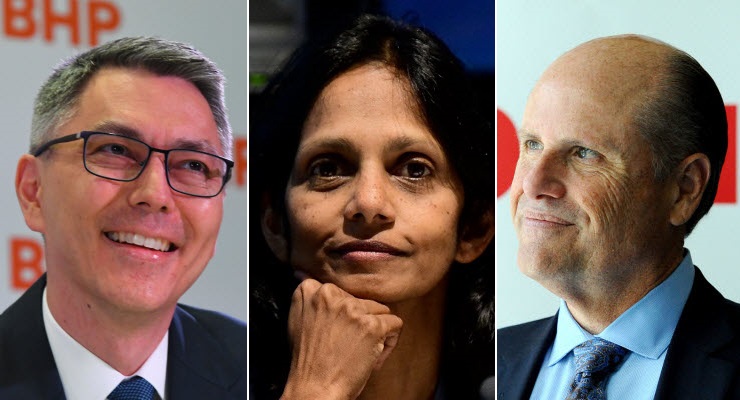
Australians have a lot of reasons to be angry at the rich. While the pandemic has seen thousands out of work or toiling away in high-risk jobs, the wealthy have lined their pockets with JobKeeper and found new and innovative ways to capitalise off the crisis.
Over the past 18 months it has become clearer that COVID is fueling inequality. But new data sheds light on just how big the wealth disparity is at the top.
OpenDirector has charted CEO pay rises during the pandemic and found that the average take-home pay for an ASX 200 CEO increased by 34% between 2020 and 2021, from $3,962,000 to $5,294,000 a year.
It’s a far cry from June when the Fair Work Commission announced a 2.5% increase in the minimum wage. At the time, the AFR reported that the major employer groups were “gobsmacked”, warning it would slow down jobs growth and could threaten the economy. Australian Industry Group chief executive Innes Willox was quoted as accusing the commission of “tempting fate”, given the uncertainties associated with the recovery.
These same concerns do not appear to apply to CEO remuneration increases.
OpenDirector calculates these increases using information in the annual reports of ASX 200 companies in the 2021 calendar year. It includes only those CEOs who have been in their current role for the whole 2020-21 period.
CSL CEO Paul Perreault’s take-home pay increased from about $37.9 million to $60.9 million, a 61% increase in Australian dollars. BHPs CEO Mike Henry’s pay increased by 139% from $8.1 million to $19.5 million. The top three is rounded out by Macquarie’s Shemara Wikramanayake’s $20.7 million take-home pay, a 14% increase.
Companies previously stated that their preferred way of reporting remuneration is actual pay, otherwise known as “take-home pay” or sometimes called “single remuneration”. The required method of reporting is the accounting statutory remuneration reporting method.
The statutory remuneration method frequently overstates the value of a CEO’s remuneration, particularly for deferred bonuses paid in shares and linked to performance hurdles. But with rising corporate profits and sharemarket, it appears the reverse has occurred. Actual take-home pay is looking very generous and materially higher than statutory remuneration.
Economists in organisations like the Brookings Institution have always been wary that pandemics like COVID-19 cause an increase in income inequality. Suppressed interest rates to support the economy causes asset inflation in the housing and sharemarket. The bull sharemarket has fed into very high executive take-home pay.
Unfortunately those on minimum wages who are lucky enough to get a 2.5% increase when inflation is running at 3.8% are at most risk of no work at all.








I used to believe the ridiculous blah from those “economists” who championed the trickle down effect. Now, it’s clear that it’s just self serving rubbish. The Gini coefficient is an accurate measure of income inequality, and has been growing over the years. Ipso facto, the rich are getting richer at the poor’s expense, and it’s time to ignore those who champion CEO payrises at the expense of others as the selfish hypocrisy that it is.
Hmm… Of course, the Rich are different to the rest of us. Faster, wiser, stronger, smarter, more beautiful. (Even Gina). It is only right and fitting that we poor bestow upon them our meager earnings, and encourage the Rich CEO males to ravish our daughters in the hope that they become impregnated and our sluggish peasant gene pool gains some of their nobility.
Yes Frank, think of the annual tax the beau monde are expected to pay. Now the government can fund and plan hundreds of railway station carparks prior to announcing the forthcoming election. Another miracle!
They must work several hundred times harder than most of us to get paid several hundred times as much.
Alan Joyce is the classic, he got a pay rise even though he has hardly got an airline to operate at the moment. All the while qantas is getting heaps of govt support still.
CSL can afford C-suite pay increases because they are retrenching thousands of workers globally as part of Project SHAPE.
What greater justification for a pay increase could there possibly be??